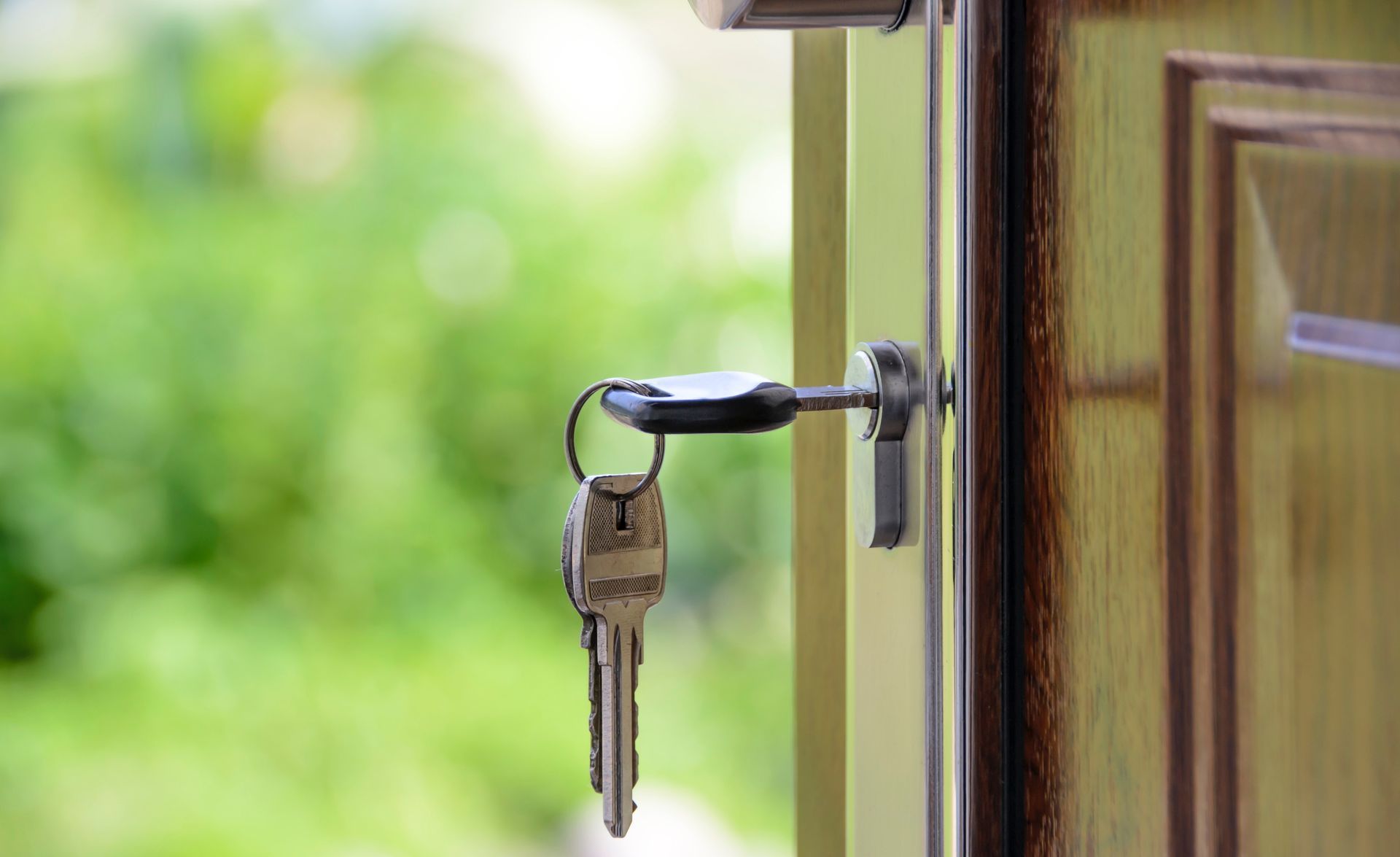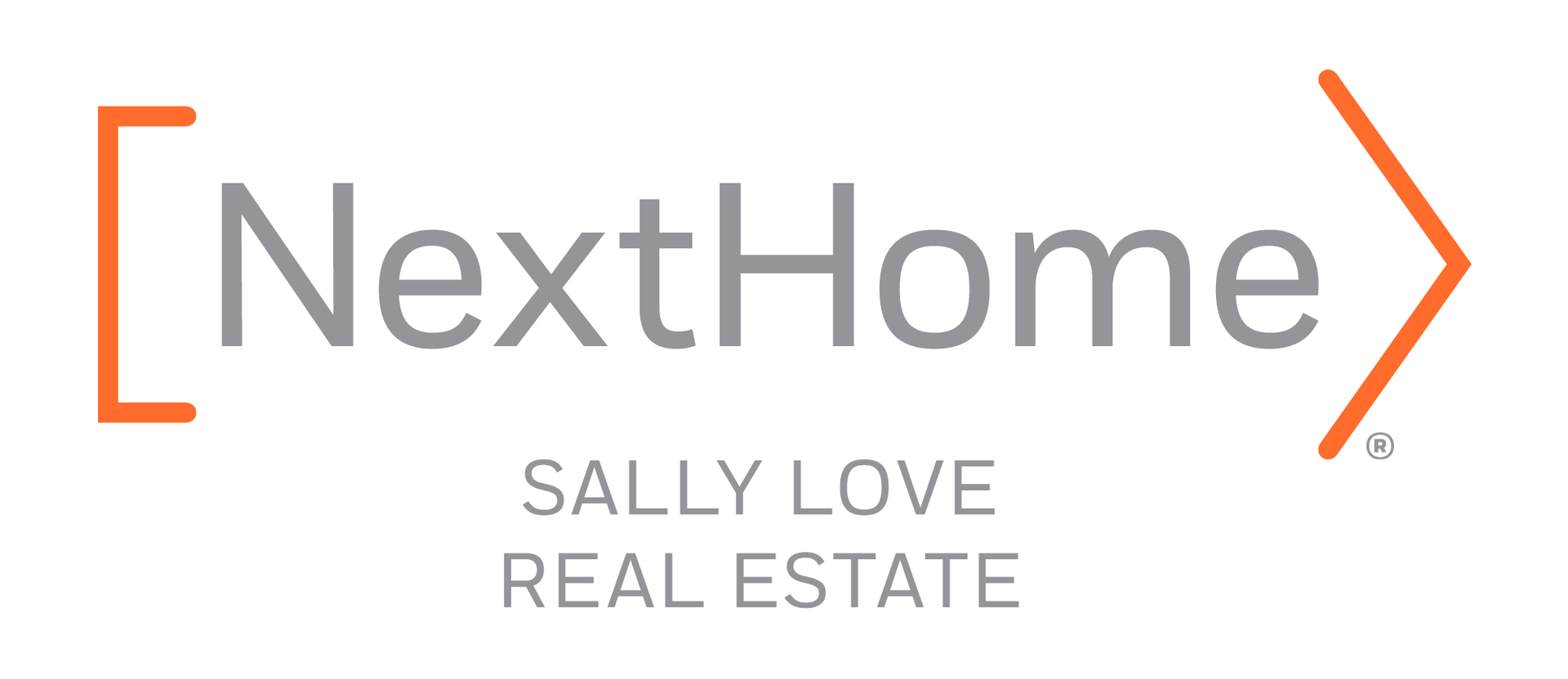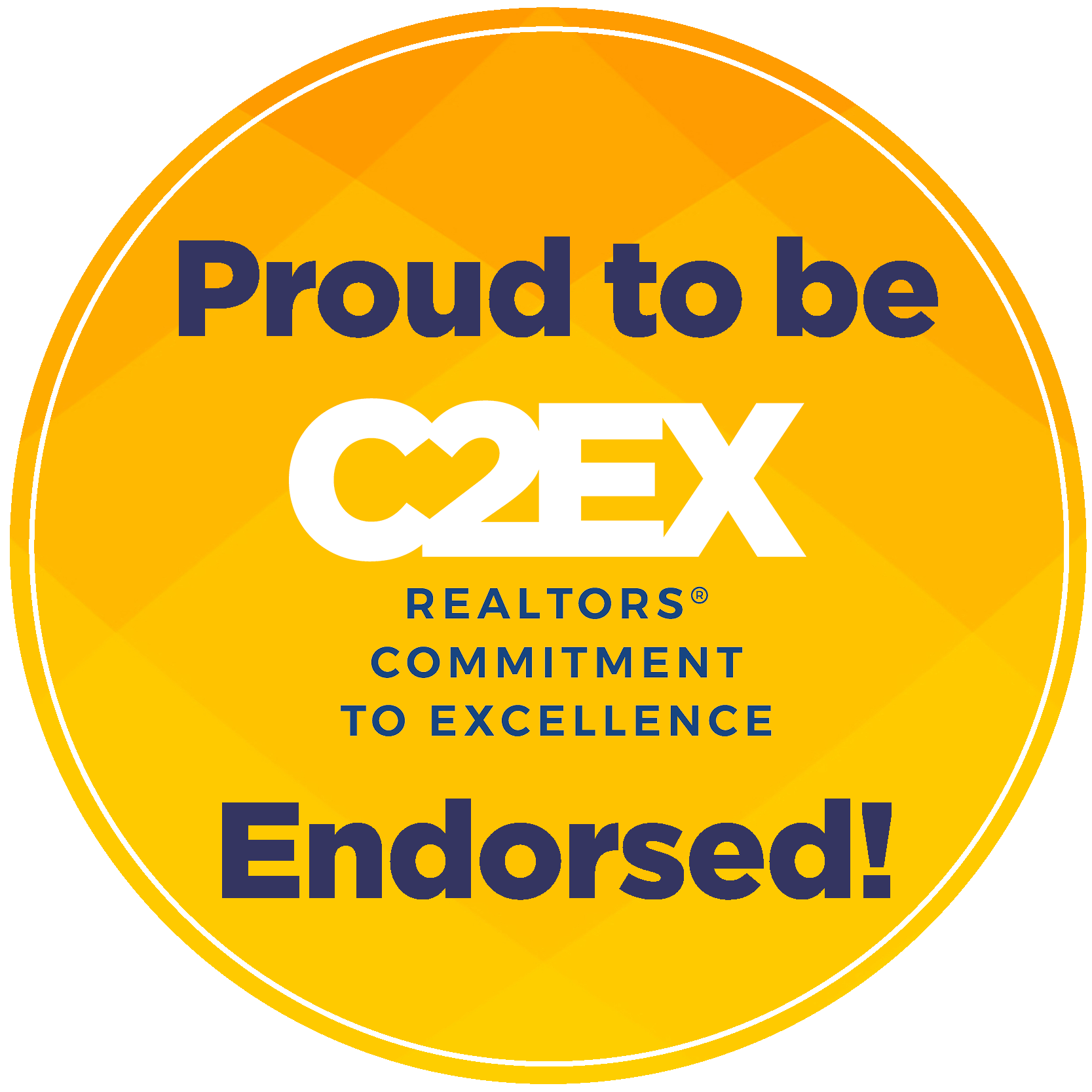1031 Echange
What is a 1031 Exchange?
A 1031 Exchange is one of the most powerful tax deferral strategies available for taxpayers, and it can build your wealth and save you a lot of money on taxes if used correctly. There are several different types of exchanges for investors to choose from, as well as a lot of important rules, restrictions, and requirements you have to follow, so make sure that you understand all aspects of this procedure before completing one yourself. In this article, we'll be going over everything you need to know about 1031 Exchanges so that you have all the knowledge to use this strategy effectively. The key to a successful 1031 Exchange is timing it correctly, smart planning, and being well informed. It takes coordination with all of the interested parties to make it effective and successful.
A 1031 Exchange is a tax-deferring procedure that gets its name from Section 1031 of the U.S. Internal Revenue Code, and it allows you to avoid paying capital gains taxes when you sell an investment property and reinvest the proceeds from the sale into a property or properties of like-kind and equal or greater value within certain time limits.[1] A 1031 Exchange is also referred to as a Starker Exchange or a Like-Kind Exchange, and it essentially allows an investor to “defer” paying capital gains taxes as well as to facilitate significant portfolio growth and increased return on investment.
The property that is being sold is called the relinquished property, and the property that is being purchased is called the replacement property. Typically, whenever someone sells property they owned, they incur a tax liability from the capital gains they made on the sale, which they now owe to the IRS. This means they would be making less money from the sale of their property because of the money they have to pay to the IRS. It also means less money they would be able to invest into another property. However, if they use a 1031 Exchange, they would be able to completely reinvest all of the money from the sale into a new like-kind property, without owing taxes to the IRS at the end of the year. In effect, you can change the form of your investment without cashing out or recognizing a capital gain. This allows you to unlock the equity and the profits that you have in your current property and move that money into other properties with more growth potential or diverse investment benefits. In most cases, in order to do this you cannot directly receive the money from the sale of your relinquished property, it must go to a qualified intermediary who will then purchase the replacement property for you and transfer you the deed. If you are ever in possession of the money you made from the sale of the relinquished property, your transaction will no longer be eligible for a 1031 Exchange. We'll go into more detail about the role of the qualified intermediary later on. There is also no limit on how many times or how frequently you can do a 1031 Exchange. You can roll over the gain from one piece of investment real estate to another, and another, and another. Although you may have a profit on each swap, you avoid tax until you sell for cash. If it works as planned, you'll pay only one tax, and at a long-term capital gains rate which is currently 15% or 20%, depending on your income, and 0% for some lower income taxpayers.[2]

Benefits of a 1031 Exchange:
As an investor, there are a number of reasons why you may consider utilizing a 1031 Exchange. Some of those reasons include:
• Tax benefits. By rolling one asset into another, you can defer the capital gains taxes on the sale of your property. This could save you thousands of dollars in taxes and help you to build up your wealth. You could even potentially avoid paying capital gains taxes indefinitely if you do the 1031 Exchange in a certain way.
• Portfolio growth and diversification. A 1031 often allows an investor to take one high value property and buy multiple properties with higher returns.
• Upgrading undesirable assets. This strategy is a fantastic way for investors to transfer out of overpriced or unwanted properties. You may also be seeking a property that has better return prospects.
• Long-term strategy. There is no limit to how many times an investor can use a 1031 Exchange, meaning you can do it as many times as you want, deferring taxes indefinitely.
• If you are the owner of investment real estate, you might be looking for a managed property rather than managing one yourself.
• You might want to consolidate several properties into one, or you might want to divide a single property into several assets.

The Four Types of 1031 Exchanges:
Because property transactions can be complicated and they're not always the same, it can be hard to know which type of 1031 Exchange you need to use for your transaction. Here, you'll learn about the four most common types of transactions, their rules, and when to use each one, so that you're able to easily assess which type you should use for your own transaction if needed.
1. Simultaneous Exchange
The simultaneous exchange happens when the relinquished property is sold and the replacement property is purchased on the same day, simultaneously. There are three ways that this exchange can occur:
1. Swap or complete a two-party trade, whereby the two parties exchange or “swap” deeds.
2. Three-party exchange where an “accommodating party” is used to facilitate the transaction in a simultaneous fashion for the exchanger.
3. Simultaneous exchange with a qualified intermediary who structures the entire exchange.[3]
While this exchange eliminates the hassle of having to find a buyer for your property and rolling over your proceeds, it also has a lot of strict rules and requirements that make it difficult to complete successfully. It can be hard to find another investor with a like-kind property who is willing to swap paperwork on the very same closing day, especially with a transaction involving properties in different cities or states. Also, only one party in this transaction is able to do the 1031 Exchange, making it even harder to find an investor willing to swap. The equity and debt on both properties have to match as well for a successful exchange. While this type of exchange is more complex, it is still possible to complete a successful simultaneous exchange and avoid paying capital gains taxes, so it is worth looking into.
2. Delayed Exchange
The delayed exchange is by far the most common type of 1031 Exchange in use, and it occurs when the exchanger relinquishes the original property before acquiring the replacement property. There are two rules you must observe when completing a delayed exchange. The first is called the 45-day rule, which states that you have 45 days from the sale of your relinquished property to identify the replacement property and designate it in writing to your intermediary. In this exchange, you are responsible for marketing the property you want to relinquish, finding a buyer for it, and closing the sale of the property before the exchange can begin. After the sale of the relinquished property is final, the proceeds will be transferred to the intermediary, and from there you have 45 days to designate the replacement property in writing to your qualified intermediary. The IRS says you can even designate three properties as long as you eventually close on one of them. The second rule is called the 180-day rule, and it states that you only have 180 days from the date the relinquished property was transferred to the buyer to close on the replacement property in order to qualify for the exchange. However, If the due date on your tax return for the tax year that the relinquished property was sold is earlier than the 180-day period, then the exchange must be completed by that earlier date. These two rules must be followed exactly or the delayed 1031 Exchange will not be successful. The extended time frame in this type of exchange makes it very doable, which is why it’s so popular.
3. Reverse Exchange
The reverse exchange, also called a forward exchange, occurs when you acquire a replacement property through an exchange accommodation titleholder before you exchange the property you currently own. This exchange is ideal when you have a replacement property picked out and are ready to purchase it for the exchange, but the sale of your original property hasn't closed yet. This exchange lets you purchase the replacement property before officially selling the relinquished property. The reverse exchange follows a lot of the same rules as the delayed exchange, but there are a few key differences to note:
• The exchanger has 45 days to identify what property is going to be sold as “the relinquished property.”
• After the initial 45 days, the exchanger has 135 days to complete the sale of the identified property and close out the reverse 1031 Exchange with the purchase of the replacement property.
You have to be very careful with this type of exchange, because of exchange regulations which don't allow the exchanger to own the new property and the old property at the same time. This exchange also requires all cash because many banks don't offer loans for reverse exchanges. However, if the circumstances of your transaction fit the description of this exchange, it may be your best bet to complete a successful 1031.
4. Construction Exchange
The construction exchange, also called an improvement exchange or a built-to-suit exchange, allows the taxpayer completing the transaction to use their exchange equity to make improvements on their replacement property. Basically, you can use your tax-deferred dollars to enhance the replacement property while it is placed in the hands of a qualified intermediary for the remainder of the 180 day period. This exchange would be ideal if you found a replacement property but it didn't meet the equal or greater value rule, mandated by the IRS, which states that the equity of the replacement property you are purchasing must be greater than or equal to the property sold. With this exchange, you would be able to use the exchange equity to enhance the replacement properties value to make it equal to or greater than the value of the original property. For this exchange to be successful, the taxpayer has to follow three rules if they want to defer all of the gain from the sale of the original property and use it to improve the replacement property. The three rules are as follows:
1. The entire exchange equity must be spent on completed improvements or as down payment by the 180th day.
2. The taxpayer must receive “substantially the same property” that they identified by the 45th day.
3. The replacement property must be equal or greater in value when it is deeded back to the taxpayer. The improvements must be in place before the taxpayer can take the title back from the qualified intermediary.[4]
If the exchanger goes down in value when acquiring the replacement property, the exchange won't be successful and the taxpayer will either have a tax liability on the equity of the sale, or a mortgage boot, which we will talk more about later on.

1031 Exchange Rules:
There are seven main 1031 Exchange rules that all have to be followed precisely in order for you to avoid paying any taxes upon the sale of your property. It’s important to learn them all in order to do a successful 1031 Exchange.
1. Like-Kind Property Rule
The exchange has to be between properties of "like-kind" in order to qualify. To qualify as a 1031 Exchange, the property being sold and the property being acquired must be of “like-kind”, which means that the original and replacement properties must be of “the same nature or character, even if they differ in grade or quality.” In other words, you can’t exchange farming equipment for an apartment building, because they’re not the same asset.[5] Any real property held for productive use in a trade or business or for investment can be considered “like-kind” property. Property used primarily for personal use, like a primary residence or a second home or vacation home, does not qualify for like-kind exchange treatment. In terms of real estate, you can exchange almost any type of property, as long as it’s not personal property. Taxpayers who hold real estate as inventory or who purchase real estate for resale are considered “dealers”, and these properties are not eligible for a 1031 Exchange. However, if a taxpayer is a dealer and also an investor, he or she can use a 1031 Exchange on qualifying properties, as long as both properties are similar enough to be considered "like-kind."
Most real estate will be like-kind to other real estate. For example, real property that is improved with a residential rental house is like-kind to vacant land. An exception to this is that improvements to a property that are conveyed without land are not of like-kind to land. Real property and personal property can both qualify as exchange properties under Section 1031, but real property can never be like-kind to personal property, meaning they can never be swapped for one another. In personal property exchanges, the rules pertaining to what qualifies as like-kind are more restrictive than the rules pertaining to real property.[6] Here’s a list of properties that are considered like-kind and properties that are not considered like-kind, so you can better understand what a like-kind property is:
Property That is Considered Like-Kind:
- Unimproved property
- Improved property
- Vacant land
- Net-lease property
- Commercial buildings
- Rental properties
- Farms or ranches
- Resort property
- Industrial property
- Retail property
- Office buildings
- Self-storage facilities
- Senior-living centers
- Hotels or motels
- Restaurants
- Daycare facilities
- Tire and automotive stores
- TIC properties
Property That is Not Considered Like-Kind:
- Inventory, stock in trade
- Stocks, bonds, other types of notes
- Securities, debt
- Partnership interests
- Trust certificates
- A personal residence (although the portion of the residence that qualifies for business or investment use—i.e., a home office—may be exchanged)
- Property held primarily for sale
- Developed lots
- Fixer-type properties that are not rented out
- Speculation homes
- Property sold immediately after acquisition or completion of improvements
- Property held for resale
2. Investment or Business Property Only Rule
It is crucial to know if the property or properties in your transaction are even eligible for a 1031 Exchange, because as you can see, a lot of properties are not eligible. Your relinquished and replacement properties will qualify for 1031 Exchange treatment if they are considered to be qualified use property. The most important point is that your properties or assets must be held for investment or used in your trade or business, not personal property. In other words, you can’t swap one primary residence for another. Properties that are not held for investment or used in your trade or business (i.e. they are held for sale) will not qualify for a 1031 Exchange. Here’s a list of properties that are eligible for a 1031 Exchange as well as a list of properties that are ineligible:
Properties Types That Are Eligible For a 1031 Exchange:
- Businesses owning real property
- Farms
- Shopping malls and strip centers
- Golf courses and practice ranges
- Trailer parks
- Self-storage facilities
- Oil, gas and mineral interests
- Water and ditch rights
- Condominiums
- Improvements/Build to Suit
- Build on land already owned
- Convenience stores
- Land
- Commercial buildings, warehouses
- Gas stations
- Apartments
- Hotels and Motels
- Rental properties
- Conservation easements
- Timberland
- Communication towers
- Parking lots
Properties Types That Are Not Eligible For a 1031 Exchange:
- Primary Residence
- Indebtedness
- Stocks, Bonds or Notes
- Partnership Interests
- Inventory[7]
For the most part, 1031 Exchanges are used only for property that isn't your primary residence. However, there are some exemptions to this that would allow you to exchange a portion of your primary residence using a 1031 Exchange, which I’ve listed below:
Exemptions of Personal Property Ineligibility:
- Rental property
- Your former residence
- Vacation home or second home
- A portion of your primary residence if you have a home office or Airbnb
- Commercial property
3. Greater or Equal Value Rule
I mentioned this rule previously in an earlier section, but it’s very important to completely understand it and how it works. In order to completely avoid paying any taxes upon the sale of your property, the IRS requires the net market value and equity of the property purchased to be equal to or greater than the property sold. Otherwise, you will not be able to defer 100% of the taxes you incur from the sale. For example, let’s say you have a property worth $750,000,000, and a mortgage of $100,000. In order to receive the full benefit of the 1031 Exchange, the replacement property or properties need to have a net worth of at least $750,000, and you’ll have to carry over at least a $100,000 mortgage for the new property to be considered equal to or greater than. Otherwise, you won’t be able to defer 100% of the tax and you will be liable for the taxes on whatever amount of money you have left from the original sale.[8]
4. Avoid “Boot” to Avoid Taxes Rule
This 1031 Exchange rule basically states that in order to have a completely tax-free exchange, you have to use all of the capital gains from the relinquished property to purchase the replacement property. If you have any amount of capital gains that you received from the sale of the relinquished property that does not go towards purchasing the replacement property, then you have what is called "boot", and it is taxable to the extent of gain realized on the sale. Basically, you cannot have any money left over from the sale and not use it to either purchase or enhance your replacement property and still have a completely tax-free exchange. If there is money left over that is not being used to purchase or enhance your replacement property or properties (construction exchange), then you will have “boot”, and you will only be able to carry out a partial 1031 Exchange. This option is completely okay, and often used when a seller wants to make money and is willing to pay some taxes to do so.
5. Same Tax Payer Rule
Another important rule that is crucial for a successful 1031 Exchange is the same tax payer rule. This rule states that the name on the tax return, and the name appearing on the title of the property being sold, must be the same as the tax return and title holder that buys the new property. For example, if you are completing a 1031 Exchange, your name must appear the same on all of the following documents: the tax return of the property being sold, the title of the property being sold, the tax return for the new property, and the title of the new property. However, an exception to this rule occurs in the case of a single member limited liability company (“smllc”), which is considered a pass-through to the member. In this case, the smllc may sell the original property, and that sole member may purchase the new property in their individual name. For example, the single member of “Jane Doe LLC” is Jane Doe. The LLC can sell the property owned by the LLC, and because Jane Doe is the sole member of the LLC, she can purchase property in her name, and be in compliance with the 1031 Exchange.
6. 45-Day Identification Window Rule
The 45-day identification window rule is one of the rules of the delayed exchange, which we briefly discussed earlier. This rule states that the person doing the exchange has 45 calendar days, from the date that the first property closed, to identify their replacement property and designate it in writing to their qualified intermediary. 45 days to find a replacement property is not as much time as it seems, so there is no reason why you should wait until the relinquished property closes before starting to look for a replacement property. Utilize the 60-90 day time period between when an Agreement of Sale is signed and when a property closes, to begin searching for replacement property so that you don’t run out of time.
7. 180-Day Purchase Window Rule
The 180-day purchase window rule is another rule we discussed earlier when talking about delayed exchanges, and it states that you have 180 days from the date the relinquished property was transferred to its buyer to close on the replacement property and qualify for the exchange. However, if the due date of the income tax return, with extensions, for the tax year in which the relinquished property was sold, is earlier than the 180-day time period, then the exchange must be completed by that earlier date.

The Role of a Qualified Intermediary in a 1031 Exchange:
The role of a qualified intermediary is very important in a 1031 Exchange, and they play a major role in making it successful. It's the intermediary's responsibility to hold the proceeds from the sale, prepare the legal documents, and ensure that the transaction is completed within IRS guidelines. In order for someone to complete a successful 1031 Exchange and move all of the profits from their relinquished property into another property or properties without incurring a tax liability, they cannot cash out on the money from the sale or recognize any capital gain. That capital gain goes to the qualified intermediary instead who creates an escrow account to hold the funds from the sale of the relinquished property during the 45 day waiting period, and then transfers the funds from the escrow account to a title or escrow company for the purchase of the replacement property when it’s selected. This ensures that the seller never takes constructive receipt of the funds from the sale, meaning they are never in direct possession of the money.[9] The seller must execute a written agreement with the qualified intermediary before closing on the sale of the existing property. This preserves tax deferral benefits and completes a successful 1031 Exchange.
For most 1031 Exchanges, there are three parties involved in the transaction, which are the taxpayer, the buyer of the relinquished property, and the seller of the replacement property. Sometimes there is even more than three parties, if the taxpayer is acquiring more than one replacement property, meaning each replacement property seller is an additional party to be considered in the transaction. For exchanges like these with more than two parties, a qualified intermediary is always required and cannot legally be completed without one. However, there are also "pure" exchanges, which only involve two parties, the taxpayer and the buyer. In a two party 1031 Exchange, the taxpayer conveys the relinquished or old property to the buyer and the replacement property is conveyed from the buyer to the taxpayer. These exchanges are structured as a true trade, and the ownership transfers must occur simultaneously with care taken in order to account for each property's respective market values to ensure tax liabilities are fully deferred.[10] In two party exchanges, a qualified intermediary isn't technically required to complete the transaction. However, the absence of a qualified intermediary in these exchanges usually results in delays in ownership transfers or IRS guidelines not being followed, which causes the exchange to fail. Two party exchanges are also pretty rare, given the likelihood that the taxpayer and the buyer want each other’s property and that the properties in the swap are of like-kind and equal value. While a qualified intermediary isn't legally required for two party exchanges, its highly recommended that you use one no matter what type of exchange you're doing, to ensure it’s done correctly and in a timely manner.
There are also rules about who can act as your qualified intermediary. The intermediary is “qualified” according to the IRS because he/she is an independent party with the sole purpose of facilitating the exchange process. You cannot act as your own facilitator, and neither can anyone who has worked for you and acted as your employee, attorney, accountant, investment banker, broker, or real estate agent within the two year period preceding the date of the transfer of the relinquished property. They are treated as an agent of the exchanger and are specifically disqualified from being a qualified intermediary. The best way to find a qualified intermediary for your transaction is to go to your local escrow officer and ask them for a recommendation. Before you hire one, ask them for references and make sure they have errors and omissions insurance as well as fidelity insurance, to protect you against fraud or negligence.

Replacement Property Identification Requirements
We have discussed the ability to exchange one property for multiple properties, but it's important to see every identification rule of this stipulation laid out completely so you can reference them if you plan on doing a 1031 Exchange. You must follow these three identification rules exactly if you plan on exchanging one property for multiple properties:
1. 3 Property Rule: You can identify three replacement properties without regard to their fair market value, as long as you eventually close on one.
2. 200-Percent (200%) Rule: You can identify any number of replacement properties so long as their aggregate fair market value of all replacement property does not exceed 200% of the aggregate fair market value of all relinquished properties.
3. 95-Percent (95%) Rule: You can identify any number of replacement properties without regard to the combined fair market value, as long the replacement properties acquired amount to at least 95% of the fair market value of all identified properties.
Identification Requirements:
As you now know, the identification period in a Section 1031 delayed exchange begins on the date the taxpayer transfers the relinquished property and ends at midnight on the 45th calendar day thereafter. The identification must meet the following requirements:
• Identification must be made in a written document signed by the taxpayer
• The identification must be hand-delivered, mailed, telecopied, or otherwise sent before the end of the identification period
• The identification must be sent to either the person obligated to transfer the replacement property to the taxpayer (qualified intermediary) or any other person involved in the exchange other than the taxpayer or a disqualified person
• Each potential replacement property must be unambiguously described (i.e. legal description, street address or distinguishable name)
If the replacement property consists of property to be produced, in addition to meeting the previously stated requirements, the person completing the exchange has to identify the real property and the improvements to be constructed in as much detail as is practicable at the time the identification is made. They also have the ability to substitute a new replacement property or properties by revoking a previous identification in the same manner as originally identified and subsequently identifying new replacement properties as long as this is done in writing and meets all other identification requirements within the 45-day identification period.[11]

Depreciation Recapture Requirements
Another very important aspect of buying and selling property is accounting for depreciation. Depreciation can result in huge tax savings at the end of the year, but it can also be very tricky to figure out. 1031 Exchanges can also result in huge tax savings at the end of the year, but it makes the depreciation process even more confusing. Here, were going to explain how depreciation works in regard to 1031 Exchanges, in order to help you navigate the depreciation of your property after a 1031 Exchange.
It is extremely important that you take depreciation and depreciation recapture issues into account when evaluating the various options available to you for your real estate investment portfolio. When a taxpayer completes an exchange they need to know how to figure the depreciation on the new replacement property. Some taxpayers think the starting figure for the 1031 replacement property is the amount they paid for it, which is not accurate. The new starting basis in the replacement property is the amount that the replacement property cost, minus the gain deferred in the exchange. For example, lets say you purchased an investment property seven years ago for a net acquisition cost of $250,000. Throughout the seven years you've owned the property, its value has depreciated by $40,000, which makes the adjusted basis for your relinquished property now $210,000. Let's say that you then sell the property for $500,000. Your realized gain from the sale would be $500,000 minus the adjusted basis of $210,000 for the property, which includes depreciation. That would leave you with $290,000 of realized gain from the sale of your original investment property. Let's also say you meet the 1031 Exchange requirements and decide you want complete a 1031 Exchange and reinvest this money into a new investment property. You start the exchange process and purchase a single-family investment property for $650,000, including acquisition and 1031 Exchange expenses. The $290,000 of realized gain from the sale of your relinquished property would transfer over, giving you a new adjusted cost basis of $360,000 for the replacement property. Even though you paid a lot more for it, that's the way it works for a 1031 Exchange. There is actually a quick method to calculate the cost basis of your replacement property in a situation like this. Just take its acquisition cost and subtract the capital gain from the sale of the relinquished property that you’re deferring in the exchange. In the example I used, the $650,000 acquisition cost minus the $290,000 capital gain on the relinquished property gives you the same adjusted cost basis of $360,000 for the replacement property.[12]
With that being said, you might think that you now take the $360,000 adjusted cost basis and start the depreciation period on the replacement property. That is one way to do it, but there are also other ways. You can either split the depreciation into two schedules, or you can choose to opt out and depreciate the entire cost basis on a new schedule. Starting a new depreciation schedule is easier, especially if you acquired multiple properties in the exchange, but using the two-schedule method is usually the smarter option tax-wise. Here's a run-down of both of these options:
Option 1: Separate Depreciation Schedules
If you choose to follow the IRS depreciation guidelines, you’ll have to depreciate the replacement property according to two separate depreciation schedules:
• Any remaining depreciation from your relinquished property must be continued on the original time schedule. In the example I used, if you owned the first property for seven years, this means the remaining $210,000 adjusted cost basis would need to continue to be depreciated for another 20.5 years, because the total depreciation time frame is 27.5 years for residential investment properties, and 39 years for commercial properties.
• The rest of the cost basis in the replacement property is the portion that represents additional money spent on the new property. This portion of money depreciates separately on a new depreciation schedule. In the example I used, the original property was sold for $500,000 and the replacement property was purchased for $650,000. That means that there was $150,000 of additional money used to purchase the replacement property, which is the other portion of the cost basis in the replacement property. This additional $150,000 will be depreciated over a 27.5-year schedule, beginning at the time the 1031 Exchange was finalized. This portion of the cost basis is also known as the excess basis and is the only part of the transaction that is treated as a new investment property in the eyes of the IRS. This method allows you to depreciate more of the cost basis each year than the alternative. It’s more complex, but it can be the most effective in reducing your taxable income.
Option 2: Starting a New Depreciation Schedule
If you choose to go with this option, you’ll use the same cost basis method we discussed earlier. You’ll choose to treat the entire cost basis as a newly acquired property. Continuing the example we’ve been using of a replacement property with a $360,000 adjusted cost basis, you would then take this amount and divide it by 27.5 to determine your annual depreciation deductions (or divide it by 39 if it’s a commercial property). Using this method, you have to treat the replacement property as a new asset. You can do this on IRS Form 4562 (depreciation and amortization), which you’ll file along with your tax return in the year you close on the replacement property. This option is less complicated than the first, but your depreciation deductions will be smaller than they otherwise would be until the relinquished property’s depreciation schedule runs out.
Residential to Commercial Exchanges
While most 1031 Exchanges involve two properties of the same type, we're going to go ahead and explain the rules of depreciation for a residential-to-commercial or a commercial-to-residential 1031 Exchange so you have all of the information.
• Residential to commercial: If you’re replacing a residential property with a commercial property, the remaining part of the relinquished property’s cost basis would be depreciated over 39 years minus however long you’ve owned it.
• Commercial to residential: If you replace a commercial property with a residential one, the remaining cost basis in the original property would still be depreciated on the commercial property schedule, with any excess basis in the replacement property depreciated over 27.5 years.
When deciding which method to use for your own transaction, the best one for your situation can depend. If you want to keep your taxes as simple as you can and you aren't very worried about your taxable income, it’s probably best go with option two and to treat the replacement property as a single, newly acquired asset. However, if you want to maximize your depreciation tax benefits after the 1031 Exchange is complete, option one will probably be your best bet.[13]

Conclusion
Hopefully you were able to learn the basics of a 1031 Exchange and how to execute one the right way. The moral of the story here is that anyone, regardless of their background or real estate experience, has the ability to be successful and to make money by getting educated and using a strategy like this one. Those who are proactive about using this tremendous tax-saving tool can take advantage of the multitude of benefits that it promises to real estate investors. Now that you have all of the knowledge necessary and all of the tools to succeed, contact a professional about how you can get started today.
- Smith, Benjamin. “How To Do a 1031 Exchange: Rules & Definitions for Investors 2020.” RealWealth, May 21, 2020. https://www.realwealthnetwork.com/learn/how-to-do-a-1031-exchange-rules-definitions/.
- Wood, Robert W. “1031 Exchange Rules: What You Need to Know.” Investopedia. Investopedia, June 1, 2020. https://www.investopedia.com/financial-edge/0110/10-things-to-know-about-1031-exchanges.aspx.
- Smith, “How To Do a 1031 Exchange: Rules & Definitions for Investors 2020.”
- Smith, “How To Do a 1031 Exchange: Rules & Definitions for Investors 2020.”
- Smith, “How To Do a 1031 Exchange: Rules & Definitions for Investors 2020.”
- “Like-Kind Exchanges Under IRC Code Section 1031.” Internal Revenue Service, 2008. https://www.irs.gov/newsroom/like-kind-exchanges-under-irc-code-section-1031.
- “1031 Exchange Rules and Requirements.” Atlas 1031, April 12, 2019. https://atlas1031.com/basics/1031-exchange-rules-requirements/.
- Smith, “How To Do a 1031 Exchange: Rules & Definitions for Investors 2020.”
- Conness, C. Grant. “What Is a Qualified Intermediary for a 1031?” The Balance, October 2019. https://www.thebalance.com/how-a-qualified-intermediary-faciliates-a-1031-exchange-1798718.
- “1031 Exchange Tips: a Look at Simultaneous Exchanges (or Swaps).” 1031 Exchange Tips: Simultaneous Exchanges. Accessed July 4, 2020. https://www.accruit.com/blog/1031-exchange-tips-look-simultaneous-exchanges-or-swaps.
- “1031 Exchange Identification Rules.” Asset Preservation, Inc., March 7, 2019. https://apiexchange.com/identification-rules/.
- Frankel, Matt. “Depreciation After a 1031 Exchange: How It Works.” Millionacres. Millionacres, April 1, 2020. https://www.fool.com/millionacres/taxes/depreciation/depreciation-after-1031-exchange-how-it-works/.
- Frankel, "Depreciation After a 1031 Exchange: How It Works.”
BROWSE
ABOUT

Each NextHome office is independently owned and operated.
We are committed to providing an accessible website. If you have difficulty accessing content, have difficulty viewing a file on the website, notice any accessibility problems or should you require assistance in navigating our website, please contact us.
All Rights Reserved | Website Powered by Get.realtor.
All Rights Reserved | Website Powered by National Association of REALTORS®




